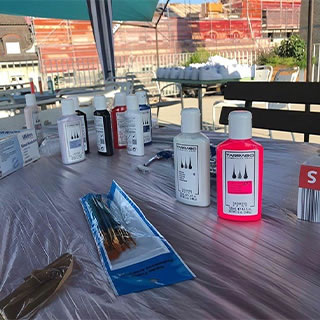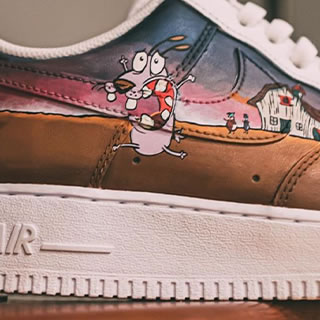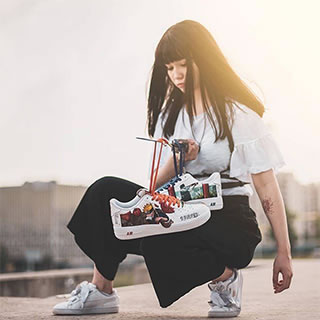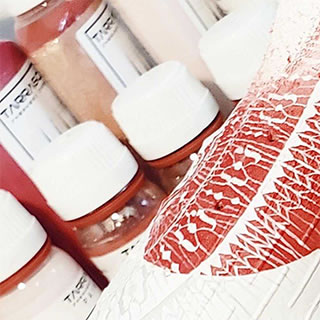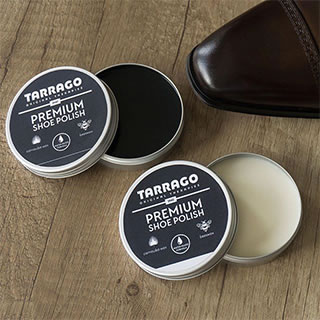RIT DYE ProLine Powder Dye 1LB TAN / BEŻOWY profesjonalny barwnik w proszku do tkanin i innych powierzchni
Profesjonalny barwnik do tkanin
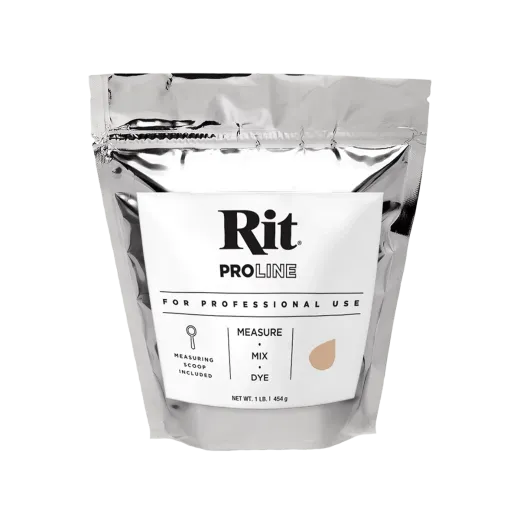
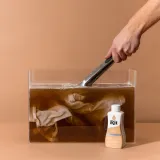
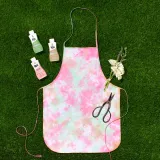
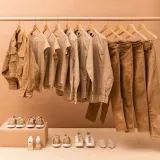
- Cena: €49.63 €47.15 / szt.
-
-
szt.
- Watch the product:
- Code: RIT_PL_POW16
- Manufacturer: Rit Dye
- Manufacturer's code: 885967841626
-
Availability:
 Exists
Exists
30 dni na zwrot
profesjonalne doradztwo - 100% zadowolonych klientów
Rekomendowane materiały:
Podstawowe właściwości produktu:
Produkt najczęściej stosowany do:
RIT DYE ProLine Powder Dye 1LB TAN / BEŻOWY profesjonalny barwnik w proszku do tkanin i innych powierzchni - sklep Customizacja
Beżowy profesjonalny barwnik do tkanin i innych powierzchni w formie proszku. Natychmiastowy transport do dużej, puszystej latte w zalesionej kawiarni w górskim miasteczku.
Profesjonalne barwniki do zastosowań przemysłowych
Formuła barwników z linii RIT ProLine zawiera zaawansowaną mieszankę pigmentów bezpośrednich, kwasowych i dyspersyjnych, którą możesz zastosować do włókien naturalnych i syntetycznych. Barwniki z tej linii idealnie nadają się do skalowania projektów farbiarskich, niezależnie od ich rozmiaru. Doskonałe do barwienia tekstyliów przemysłowych (np. dywanów patchwork), kombinezonów i mundurów (np. instytucje korporacyjne, rządowe), garderoby (np. film, telewizja, teatr), kostiumów cosplay. Chętnie wykorzystywane przez producentów odzieży, do druku 3D, do betonu i wielu innych przemysłowych zastosowań. Profesjonalne barwniki proszkowe z tej linii to optymalna formuła dla dużych projektów. Podobnie, jak w podstawowych liniach, barwniki pozostają nietoksyczne i bezpieczne dla szamb oraz kanalizacji. Jeżeli jesteś producentem, profesjonalistą lub tworzysz na szeroką skalę i masz potrzebę barwienia większych ilości tkanin, postaw na ProLine!
Barwnikami RIT ProLine może być farbowana: bawełna, len, jedwab, wełna, ramia, sztuczny jedwab, nylon, poliester, poliestrowe mieszanki bawełny, akryl, octan, spandex, niektóre plastiki, drewno, wiklina, papier, korek, konopie, skóra, zamsz.
Zawartość opakowania: 1LB / 0.454kg
PROLINE, a inne rodzaje barwników RIT
Barwniki z linii ProLine dedykowane są fabrykom i doświadczonym profesjonalistom obrabiającym hurtowe ilości tkanin, ubrań lub przedmiotów. Jeżeli szukasz barwników do łatwego zastosowania w domu, sprawdź produkty z linii:
WAŻNE!
Przed właściwym zastosowaniem każdego środka do skór, tkanin oraz innych materiałów przeprowadź próbę weryfikującą na niewidocznym skrawku, sprawdzając działanie produktu na kolor i strukturę powierzchni. Jeżeli efekt spełnia oczekiwania, możesz przystąpić do dalszych czynności.
- How does liquid dye differ from powder dye?
There is no difference in terms of color or dye performance. The liquid dye is already dissolved in water and more concentrated than the powder dye. So you only need to use half as much when using the liquid dye. Also, since the liquid dye is pre-mixed, this eliminates the need to dissolve the dye in hot water as you need to do with the powder dye before adding it to the dyebath. As a guideline, one bottle of liquid dye is equivalent to two boxes of powder dye.
- Can I mix powder and liquid dye in the same dyebath? Are they interchangeable?
Yes! If you are following a custom color formula and you only have one color in liquid and the other in powder, it is okay to mix them. You can refer to this conversion chart to figure out which quantities to use.
- What will Rit dye?
Rit All-Purpose Dye can dye:
- Washable Fabrics Containing Natural Fibers: Such as cotton, linen, wool, silk, ramie and modal
- Washable Fabrics Containing Synthetic Fibers: Such as nylon, rayon and viscose
- Washable Fabrics Containing Cotton Synthetic Blends: Such as polyester cotton blends that contain less than 35% polyester
- Fabric Shoes: Such as cotton canvas sneakers and satin shoes made of silk
- Unfinished Wood and Wicker: Such as furniture, picture frames, moldings, shutters, wicker baskets, straw, rattan and sisal squares
- Natural Dried Plants and Pine Cones: Such as dried cornhusks, milkweed, goldenrod, thistle, foxtails and pine cones
- Paper: Such as watercolor paper and newspaper for papercrafts and cardmaking
- Miscellaneous Items: Such as unfinished clay, cement, cork, feathers, fabric lampshades, paraffin (powder dye only), cotton and nylon rope, sand and seashells
- Food for Crafts: Such as dried beans, eggshells, seeds and macaroni
Rit DyeMore for Synthetics can dye:- Washable Fabrics Containing Synthetic Fibers: Such as polyester, acetate and acrylic
- Washable Fabrics Containing Synthetic Blends: Such as polyester cotton blends that contain more than 35% polyester
- Nylon-Based Plastics: Such as buttons, fasteners, golf balls, lacrosse sticks and 3D printing items
- Miscellaneous Plastic Items: Such as legos or sunglasses
- What will Rit not dye?
- Fiberglass, spandex, and metallic fibers
- Fabrics with severe bleach or stain damage,
- Fabrics with rubber backings
- Fabrics with special finishes, such as waterproof or stain resistant finishes
- Fabrics labeled Washable Only in Cold Water or Dry Clean Only
- Can colored or printed fabrics be dyed?
Yes, colored and printed fabrics can be dyed. It’s a method called overdyeing.
If the garment you are planning to dye has a light solid color and you are looking to dye it a darker color, then all we recommend doing is following the standard instructions for how to use Rit All-Purpose Dye (if dyeing cotton, linen, silk, wool, nylon, ramie or rayon) or Rit DyeMore (if dyeing garments that have more than 35% polyester, acrylic or acetate). If you are looking to: (a) dye a dark solid garment a lighter color or (b) completely change the color of a garment from one solid color to another (such as from purple to blue), then follow our instructions on how to change the color of a garment.
If you are dyeing something with a print or logo, the color chosen for overdyeing will mix with the existing color(s) in the fabric and create new colors. In other words, the rules of color mixing apply. When selecting a color, think about how it will mix with the colors in the pattern. For example, if you were to dye an item that has a pink flower pattern with a blue dye, the pink flowers will turn purplish (blue and pink make purple) while the rest of the fabric will dye blue. Even if you were to overdye the patterned garment with a dark color, you may find that the color will appear lighter along the patterned area.
- Can I dye a black garment to white?
Unfortunately, we do not sell a white dye. However, if the garment you are wanting to dye is a natural fabric (such as cotton, linen, silk, wool or ramie), then you can remove the black color using Rit Color Remover. This will bring the garment to a white or off-white color. Then, launder it with Rit Whitener Brightener to lighten the color. Unfortunately, if your garment has more than 35% synthetic material (such as polyester, acrylic or acetate), then you cannot remove or whiten the color on the garment.
- How can I test the color of the dye?
If you are using Rit All-Purpose Dye, the most realistic test would be to use a scrap piece of fabric from the garment you are dyeing. However, you can also test color by dipping a paper towel into the dyebath. Paper towel is made of fibers that react to the dye in a similar way that cotton would.
If you are using Rit DyeMore Synthetic Dye, we recommend first heating up the dyebath on your stove to almost boiling. The most realistic test would be to use a scrap piece of fabric from the garment you are dyeing and leave it in the dyebath for 5 minutes. If a scrap piece of fabric isn’t available, then use a fabric swatch that has a similar fiber makeup as the garment (if available). Unfortunately, due to the complexities of dye synthetics, using a paper towel to test color will not give you a close representation of how the color will appear on your synthetic garment. It is worth a try if you do not have a fabric swatch available, but please keep in mind that it won’t provide you with an exact match. If color is too light, add more dye; if color is too dark, add more water. If more dye is needed, add dye in increments of 1/4 to 1 teaspoon, depending upon the recipe or amount of fabric being dyed. If color is too dark, add hot water in 1 to 2 cup increments, depending upon size of dyebath and amount of fabric being dyed.
- How do I get an even color?
To get even color, make sure the dyebath is large enough for the fabric to flow freely while it’s being stirred. If it’s too bunched up, you may get splotches or light and dark areas. Also, stirring the fabric continuously while dyeing promotes consistent exposure to the dye.
- How long should I leave my item or fabric in the dyebath?
It really depends on the desired shade and fabric. To achieve the color on the box or bottle, we suggest 30 to 60 minutes with continuous stirring. For lighter shades, we suggest 10 to 20 minutes. For 100% polyester and polyester blends, at least 30 minutes is needed for the dye to be absorbed into the fabric, even if fabric appears to have reached the desired shade in less time. Nylon tends to dye very quickly and much darker than other fibers so the actual time needed in the dyebath is much less. Colors always appear darker when wet and will dry lighter. So keep that in mind before removing an item from the dyebath.
- Should fabrics or garments be washed before dyeing?
Yes! It doesn’t matter if it is a new item or old. Pre-washing in warm, soapy water removes any finishes that may interfere with dye absorption.
- What temperature should the water be for the dyebath?
What a good question! Rit loves hot water because it loosens the fibers in the fabric to accept the dye. We recommend using the hottest water safe for your fabric. However, if you want specific temperatures, here they are!
- If dyeing natural fabrics (such as cotton, linen, silk or wool), use Rit All-Purpose Dye at 140° to 160°F (60 to 71°C). If tap water is not hot enough, heat water on the stove and add to the dyebath.
- If dyeing a material that contains more than 35% synthetic material (such as polyester, acrylic or acetate), use Rit DyeMore for Synthetics at 180° to 220°F (82° to 104°C). To do this, you will need to dye with the stovetop method.
Ask a question about the product. Our team will be happy to provide a detailed answer to your inquiry.


